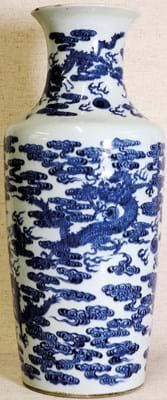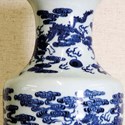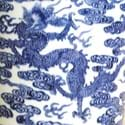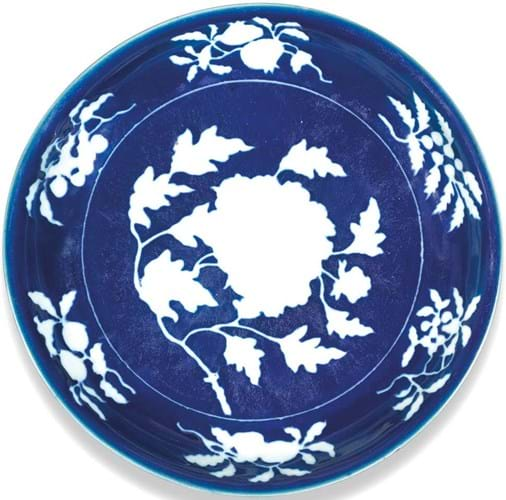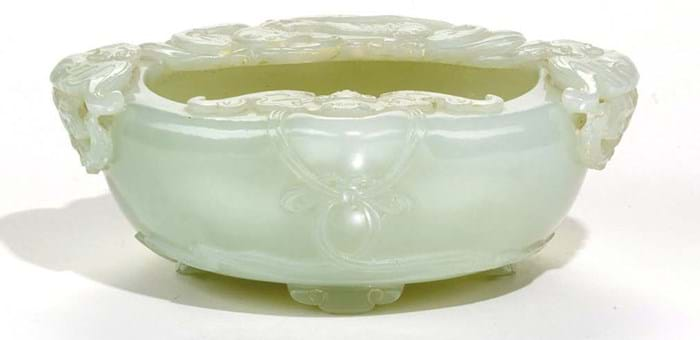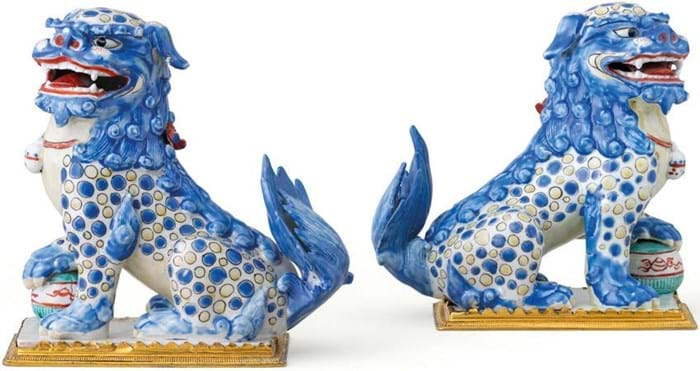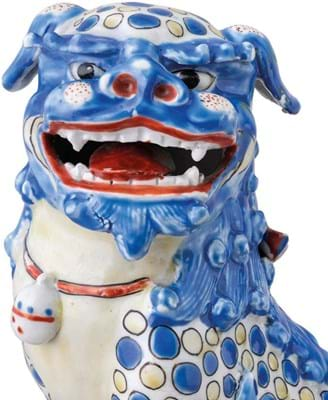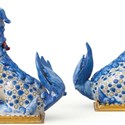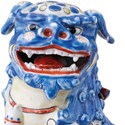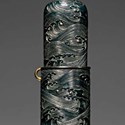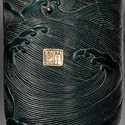AUCTION HOUSES
SWORDERS
Chinese blue and white rouleau form ‘dragons’ vase
This 17in (42cm) high rouleau form vase, a popular form in the 17th and 18th centuries, is painted with dragons chasing flaming pearls among ruyi-shaped clouds. The dragons have four rather than the imperial five-claws.
The unmarked vase, drilled for use as a lamp, came for sale from the collection of the late John Timlin, a psychotherapist who began collecting Chinese porcelain in the 1950s alongside French and German Art Nouveau.
The vase has an estimate of £200-300 at Sworders on November 4.
BONHAMS
Xuande mark and period blue and white reserve decorated ‘peony’ dish, 15in (39cm)
The Xuande (1426-35) period is marked by a sudden keen imperial interest in ceramics. This 15in (38cm) blue and white reservedecorated ‘peony’ dish is one of only four of this size, technique and design known.
Boldly decorated to the interior with a large incised peony bloom plus branches of loquat, cherry, persimmon, peach, lychee and pomegranate, the exterior is decorated with a continuous chrysanthemum scroll, with the reign mark reserved in a cartouche below the rim.
This reverse decoration technique was used for a brief period and revived only in the Yongzheng period: it required large quantities of high-quality cobalt and the technical process (still not properly understood) was complex. This piece was in the collection of Baron Guy de Villelume (1908-91) of Château de La Gorgue until 1978. Bonhams’ estimate is £700,000-1m.
SOTHEBY’S
Qing dynasty pale celadon jade ‘bats’ brushwasher, 18th century
The motifs used in Chinese art carry deep meaning. Bats seen together with lingzhi fungus are highly auspicious, creating the phrase ‘When happiness arrives, may your heart be filled with inspiration’.
The two elements are seen to this unusually small Qianlong period brush washer carved from a fine specimen of white jade. From the collection of the Earl of Jersey and by descent, it has a guide of £80,000-120,000 at Sotheby’s sale titled Monochrome Important Chinese Art on November 2.
DEALERS
SCHOENI PROJECTS
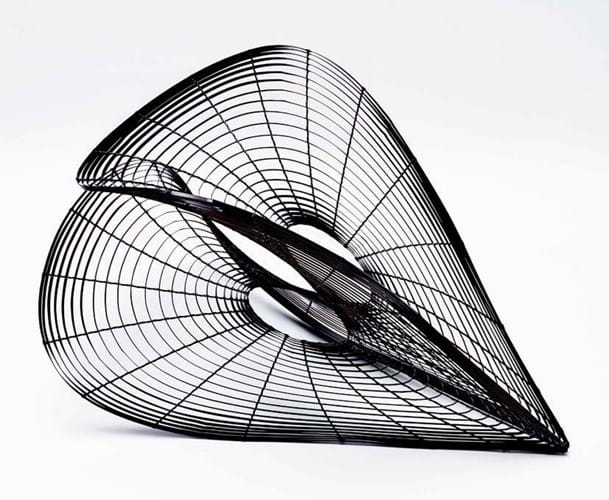
A bamboo and rattan sculpture by Tanabe Chikuunsai IV and Sawako Kaijima (b. 1976), offered by Schoeni Projects.
Hanamushin I, a bamboo and rattan sculpture by Tanabe Chikuunsai IV (b.1973) and Sawako Kaijima (b. 1976)
The Hanamushin series combines hand craftsmanship and natural materials with complex mathematically defined shapes based on Enneper surface equations.
Hanamushin is a phrase from Ryokan, a Zen monk of the late Edo period. The saying continues as follows: ‘Flowers invite butterflies without thinking of inviting them, and butterflies nestle up to flowers as they are guided. Flowers and butterflies meet each other, unintentionally, as the flow of the great law of nature.’
JORGE WELSH WORKS OF ART
Pair of Edo period kakiemon porcelain shishi c.1670-90
This pair of Arita porcelain lion dogs or shishi, each moulded in a sitting position on a rectangular flat base, are fitted onto later neoclassical metal mounts.
The kakiemon decoration was a recurrent theme among the models made in the late 17th century, with identified examples being also decorated with blue and yellow spots along their body. A similarly modelled and decorated pair of lion dogs is in the Ashmolean Museum, Oxford, and another single example at the Fitzwilliam Museum, Cambridge.
ROSEMARY BANDINI
Late 19th century blue lacquer kiseruzutsu by Rosetsu
Two lacquer artists created works with intricately details wave designs (seigaiha) in the latter half of the 19th century: firstly Shibata Zeshin, who perfected a technique of ‘combing’ the thickened wet lacquer, and secondly Rosetsu, a pupil of Shibata Shinsai, who carved his intricate design into rare dark blue lacquer in minute detail.
It has been suggested that both were inspired by Hokusai’s celebrated woodblock print Kanagawa oki name ura (Under the wave of Kanagawa).
Here Rosetsu has produced a kiseruzutsu (pipe case) in deeply carved lacquer that is inlaid with tiny beads of silver to represent the drops of spray created by the crashing waves.

